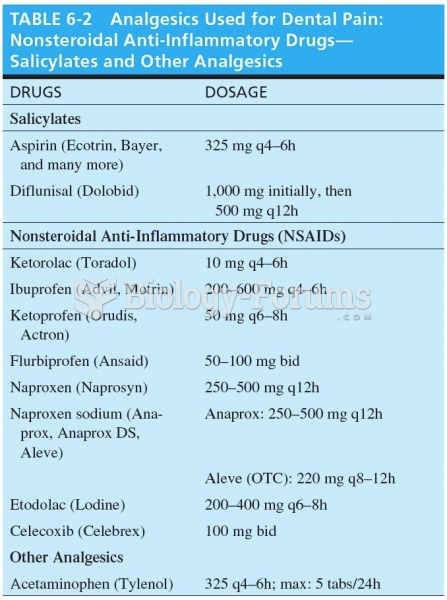Answer to Question 1
Correct Answer: 1
Rationale 1: During the transduction phase, noxious stimuli trigger the release of biochemical mediators, such as prostaglandins, bradykinin, serotonin, histamine, and substance P, that sensitize nociceptors. Noxious or painful stimulation also causes movement of ions across cell membranes, which excites nociceptors. Pain medications such as aspirin can work during this phase by blocking the production of prostaglandin or by decreasing the movement of ions across the cell membrane.
Rationale 2: The transmission of pain includes three segments. During the first segment, the pain impulses travel from the peripheral nerve fibers to the spinal cord. The second segment is transmission from the spinal cord, and ascension, via spinothalamic tracts, to the brainstem and thalamus. The third segment involves transmission of signals between the thalamus to the somatic sensory cortex, where pain perception occurs. Pain control can take place during this second process of transmission. Opioids block the release of neurotransmitters, which stops the pain at the spinal level.
Rationale 3: Perception is when the client becomes conscious of the pain. Pain perception is the sum of complex activities in the central nervous system that can shape the character and intensity of pain perceived and ascribes meaning to the pain. The psychosocial context of the situation and the meaning of the pain based on past experiences and future hopes and dreams help to shape the behavioral response that follows.
Rationale 4: Modulation is often described as the descending system, and occurs when neurons in the thalamus and brainstem send signals back down to the dorsal horn of the spinal cord. These descending fibers release substances such as endogenous opioids, serotonin, and norepinephrine, which can inhibit the ascending painful impulses in the dorsal horn. In contrast, excitatory amino acids and the upregulation of excitatory glial cells can amplify these pain signals. The effects of excitatory amino acids and glial cells tend to persist, whereas the effects of the inhibitory neurotransmitters tend to be short-lived because they are reabsorbed into the nerves. Tricyclic antidepressants block the reuptake of norepinephrine and serotonin, and may be used to help diminish the pain signals.
Answer to Question 2
Correct Answer: 1
Rationale 1: It is documented that the use of antacids can reduce the risk of gastric distress, but can also reduce the absorption and the effectiveness of the medication.
Rationale 2: Antacids can reduce the likelihood of gastric bleeding; however, antacids will interfere with the absorption of the medication in the client.
Rationale 3: This statement is not correct.
Rationale 4: Antacids may reduce the pain associated with gastric distress; however, antacids are not a category of pain medication.







